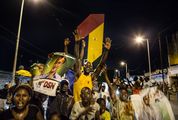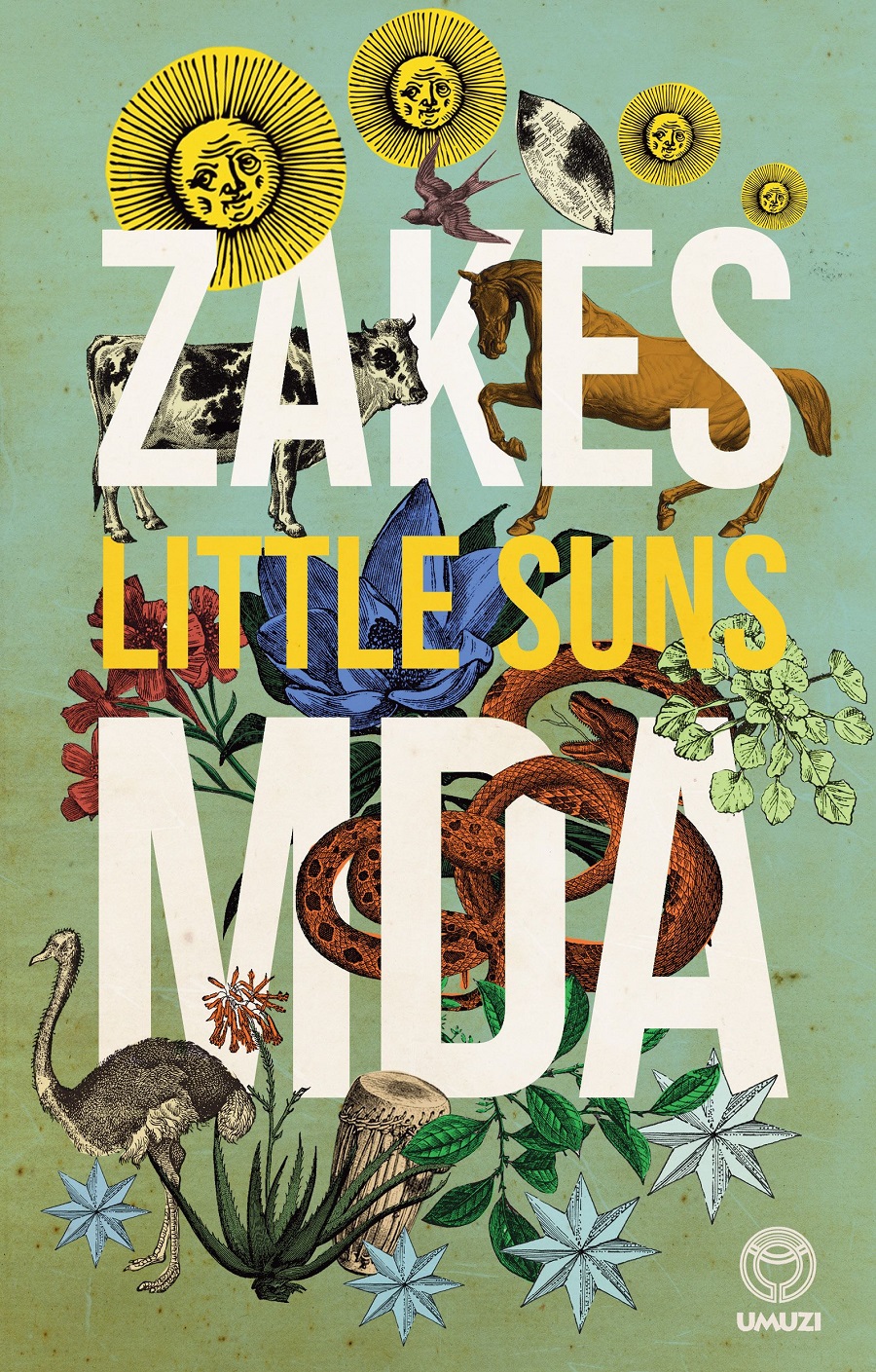BOOK REVIEWS: Chasing the Tails Of My Father’s Cattle and Little Suns
by Rehana Rossouw,
2016-02-12 05:56:48.0
THE Greek philosopher Plato said that the muses gave us the arts not for "mindless pleasure", but "as an aid to bringing our soul-circuit, when it is out of tune, into order and harmony with itself".
SA’s foremost storytellers Sindiwe Magona and Zakes Mda travel back through time to the Eastern Cape to help craft answers to a question that burns through SA today: what racial scars are bruising our souls?
They describe the clash of civilisations when the settlers arrived with their Bibles and guns, the growing competition for resources and the vanquishing of proud and noble kingdoms.
Mda tells the true history of the exile of members of his family under the leadership of King Mhlontlo ka Matiwane — from Qumbu to Lesotho — following the assassination of the British magistrate Hamilton Hope in October 1880. He is remarkably adept in resuscitating words from the mouths of the long departed.
Like his previous bestseller The Heart of Redness, Mda’s Little Suns is told in two interwoven tales; the events leading up to the murder and the return from exile two decades later of Malangana, the junior brother and groom of King Mhlontlo of the amaMpondomise.
When we first meet Malangana he is as restless as the king’s horse Gcazimbane, for which he is responsible. He is giddy in love with the young healer Mthwakazi, which means "a woman of the abaThwa" — the people known as Bushmen by the English. This love is not forbidden; when he recites the genealogy of his family going back 300 years there are abaThwa among his ancestors.
But his plans to ask her people for permission to marry are thwarted by the arrival of Hope and his Cape Mounted Riflemen, spoiling for a fight with the Basotho and planning to strongarm the amaMpondomise into fighting alongside his ragged forces.
Hope has scant regard for the customs of the peoples’ who fall under his control. He refuses to accept that the king is in mourning and forbidden to touch weapons of war for a year — and pays the ultimate price for his cultural insensitivity. Distracted by his courtship, Malangana misses the moment, but his spear pierces the already-dead Hope’s heart.
During their flight into exile in Lesotho, Malangana tries his utmost to keep the horse Gcazimbane healthy and strong, while Mhlontlo slowly slides into decline. Mda’s description of the effect of this futile struggle on Malangana’s flesh is as riveting and tragic as his depiction of the destruction of the kingdom of amaMpondomise. Mda weaves into the book all the myths and magic he collected while researching his family’s history — including Mhlontlo’s fabled ability to turn white men’s bullets into water and the visit of a sacred brown mole snake to a newborn baby bringing wisdom and good fortune.
Little Suns ends tragically in 1912 at Caba Location, Qumbu.
Magona’s Chasing the Tails of my Father’s Cattle begins in the village of Zenzele, near Mthatha in 1939. Her novel is more strongly located in the realm of magical realism — the protection her brown mole snake (yes, another one) bestows on a baby is as believable and steadfast as the departed who keep watch over the infant.
The baby in need of care is Shumikazi — daughter of the long suffering Miseka who has nine children in the ground and Jojo, who is buried in Johannesburg’s mines where he went to earn cash for the hut taxes demanded by the government.
The people of Zenzele are divided. Some have adopted the religion of the skinless ones; they go to church and educate their children. Others live according to ancient traditions and Ubuntu — the art of being human.
Jojo straddles the cultures; he appreciates the strength of his wife who keeps his herd strong and his fields cultivated while he toils in the mines, but he also respects his brothers who live according to the old ways, prime among them the enormous and brutal power they wield over their women.
Shumi’s mother dies in childbirth and, during his visits home every December, her father develops a love and admiration for the young girl marked by survival, foresight and intellect. In a community filled with clucking tongues and eyes so blinded by the past that they are incapable of seeing the huge changes afoot in the country, Jojo goes against the grain by quitting the mines and working hard on his land to bestow wealth on his daughter.
The power of Magona’s story lies in her depiction of the tiniest details of everyday life in an Eastern Cape village — from the number of nails pounded into a hut’s wall to hang a scant wardrobe, to animal husbandry and the rituals of traditional ceremonies. Every character in the village comes to life under her penetrating gaze, all their foibles and all their fears.
In places, Magona’s poetry and song are essential to tune her readers’ ears into the soundtrack of life in Zenzele, but at times this is stretched to breaking point.
Both novels immerse readers in times and places that are well worth a visit by those who seek to understand the victimhood and victimisation that leads to the verbal blows we inflict on each other in SA today. At the heart of both is a description of the redemption offered by love.
THE Greek philosopher Plato said that the muses gave us the arts not for "mindless pleasure", but "as an aid to bringing our soul-circuit, when it is out of tune, into order and harmony with itself".
SA’s foremost storytellers Sindiwe Magona and Zakes Mda travel back through time to the Eastern Cape to help craft answers to a question that burns through SA today: what racial scars are bruising our souls?
They describe the clash of civilisations when the settlers arrived with their Bibles and guns, the growing competition for resources and the vanquishing of proud and noble kingdoms.
Mda tells the true history of the exile of members of his family under the leadership of King Mhlontlo ka Matiwane — from Qumbu to Lesotho — following the assassination of the British magistrate Hamilton Hope in October 1880. He is remarkably adept in resuscitating words from the mouths of the long departed.
Like his previous bestseller The Heart of Redness, Mda’s Little Suns is told in two interwoven tales; the events leading up to the murder and the return from exile two decades later of Malangana, the junior brother and groom of King Mhlontlo of the amaMpondomise.
When we first meet Malangana he is as restless as the king’s horse Gcazimbane, for which he is responsible. He is giddy in love with the young healer Mthwakazi, which means "a woman of the abaThwa" — the people known as Bushmen by the English. This love is not forbidden; when he recites the genealogy of his family going back 300 years there are abaThwa among his ancestors.
But his plans to ask her people for permission to marry are thwarted by the arrival of Hope and his Cape Mounted Riflemen, spoiling for a fight with the Basotho and planning to strongarm the amaMpondomise into fighting alongside his ragged forces.
Hope has scant regard for the customs of the peoples’ who fall under his control. He refuses to accept that the king is in mourning and forbidden to touch weapons of war for a year — and pays the ultimate price for his cultural insensitivity. Distracted by his courtship, Malangana misses the moment, but his spear pierces the already-dead Hope’s heart.
During their flight into exile in Lesotho, Malangana tries his utmost to keep the horse Gcazimbane healthy and strong, while Mhlontlo slowly slides into decline. Mda’s description of the effect of this futile struggle on Malangana’s flesh is as riveting and tragic as his depiction of the destruction of the kingdom of amaMpondomise. Mda weaves into the book all the myths and magic he collected while researching his family’s history — including Mhlontlo’s fabled ability to turn white men’s bullets into water and the visit of a sacred brown mole snake to a newborn baby bringing wisdom and good fortune.
Little Suns ends tragically in 1912 at Caba Location, Qumbu.
Magona’s Chasing the Tails of my Father’s Cattle begins in the village of Zenzele, near Mthatha in 1939. Her novel is more strongly located in the realm of magical realism — the protection her brown mole snake (yes, another one) bestows on a baby is as believable and steadfast as the departed who keep watch over the infant.
The baby in need of care is Shumikazi — daughter of the long suffering Miseka who has nine children in the ground and Jojo, who is buried in Johannesburg’s mines where he went to earn cash for the hut taxes demanded by the government.
The people of Zenzele are divided. Some have adopted the religion of the skinless ones; they go to church and educate their children. Others live according to ancient traditions and Ubuntu — the art of being human.
Jojo straddles the cultures; he appreciates the strength of his wife who keeps his herd strong and his fields cultivated while he toils in the mines, but he also respects his brothers who live according to the old ways, prime among them the enormous and brutal power they wield over their women.
Shumi’s mother dies in childbirth and, during his visits home every December, her father develops a love and admiration for the young girl marked by survival, foresight and intellect. In a community filled with clucking tongues and eyes so blinded by the past that they are incapable of seeing the huge changes afoot in the country, Jojo goes against the grain by quitting the mines and working hard on his land to bestow wealth on his daughter.
The power of Magona’s story lies in her depiction of the tiniest details of everyday life in an Eastern Cape village — from the number of nails pounded into a hut’s wall to hang a scant wardrobe, to animal husbandry and the rituals of traditional ceremonies. Every character in the village comes to life under her penetrating gaze, all their foibles and all their fears.
In places, Magona’s poetry and song are essential to tune her readers’ ears into the soundtrack of life in Zenzele, but at times this is stretched to breaking point.
Both novels immerse readers in times and places that are well worth a visit by those who seek to understand the victimhood and victimisation that leads to the verbal blows we inflict on each other in SA today. At the heart of both is a description of the redemption offered by love.





















Change: -0.47%
Change: -0.57%
Change: -1.76%
Change: -0.34%
Change: 0.02%
Data supplied by Profile Data
Change: -1.49%
Change: 0.08%
Change: -0.47%
Change: 0.00%
Change: -0.04%
Data supplied by Profile Data
Change: -0.34%
Change: 0.03%
Change: -0.10%
Change: -0.22%
Change: -0.69%
Data supplied by Profile Data
Change: -0.28%
Change: -1.15%
Change: -0.07%
Change: -1.21%
Change: -0.22%
Data supplied by Profile Data